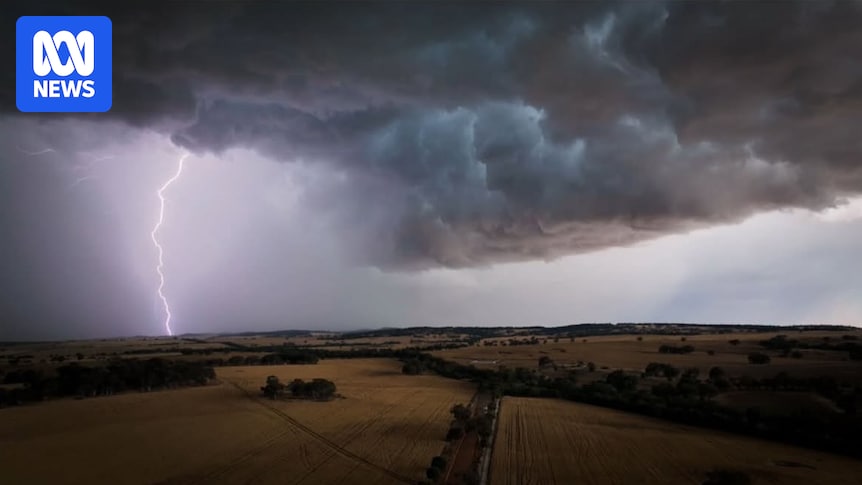
Heavy rainfall and hailstorms have severely impacted Western Australia’s Wheatbelt, causing significant disruption to local businesses and farmers. The severe weather, which swept through the region overnight, has led to flooded businesses, closed roads, and interruptions in the state’s grain harvest.
The town of Brookton, located 130 kilometers east of Perth in the Great Southern, recorded the highest rainfall with 50.2 millimeters on Wednesday afternoon, according to the Bureau of Meteorology (BOM). In some areas, rainfall totals exceeded 100 millimeters, notably at South Burracoppin, east of Perth.
Impact on Agriculture and Livestock
Brookton farmer Murray Hall described the hailstorm as “unbelievable” and spent the morning assessing the damage. He discovered two sheep that had been struck by lightning, highlighting the storm’s severe impact on livestock.
“Livestock is our first priority,” Hall stated, as he began talks with his insurance company about crop damage.
Hall reported extensive damage to his canola crops, with seeds scattered on the ground. “I’ve seen some areas that have 100 percent damage in the canola crops, barley has also been affected around 50 to 80 percent in some areas,” he added.
The BOM recorded over 250,000 lightning strikes in southern WA in the 24 hours leading up to midnight on Wednesday, with 50,000 strikes occurring in the Central Wheatbelt and Great Southern regions.
Community and Infrastructure Challenges
Brookton Shire President Rod Wallis noted significant damage to roads, with shire crews working tirelessly to repair the damage. Local businesses, including a hairdresser and hardware store, were forced to close due to extensive flood damage.
Widespread Wild Weather
Hail and wild weather also devastated crops south of Merredin in the eastern Wheatbelt. Agronomist David Keamy reported that some areas recorded up to 80 millimeters of rain, forcing farmers to write off entire crops.
“This damage is so widespread, in the places it was bad, it was really bad,” Keamy commented.
BOM senior meteorologist Jess Lingard mentioned that warnings had been issued ahead of the storm systems, which have now moved eastward into South Australia. “So we’re left with a lot of cloud around the South West and the Great Southern this morning, a bit of a hangover from all of that activity yesterday,” she explained.
Fire Hazards and Emergency Response
In Tammin, 180 kilometers east of Perth, wind gusts of up to 65 kilometers per hour caused a tree branch to snap and hit a power line, sparking an emergency-level bushfire. Shire chief executive Andrew Malone reported the loss of sheds, unharvested crops, and minor damage to a meat processing business.
“This was the first fire that had a significant impact on the town site, properties, and local businesses, but it could have been much worse,” Malone said.
Crews were then dispatched to another fire at nearby Yorkrakine, ignited by lightning. North-east of Perth, Dalwallinu farmer Steve Carter reported that lightning had started several fires on Tuesday afternoon, with firefighters and rain helping to extinguish them.
Looking Ahead
The recent storms underscore the vulnerability of the Wheatbelt region to extreme weather events. As the community begins recovery efforts, the focus will be on assessing the full extent of the damage and implementing measures to mitigate future risks. The situation highlights the need for robust emergency response systems and comprehensive insurance coverage to support affected farmers and businesses.






